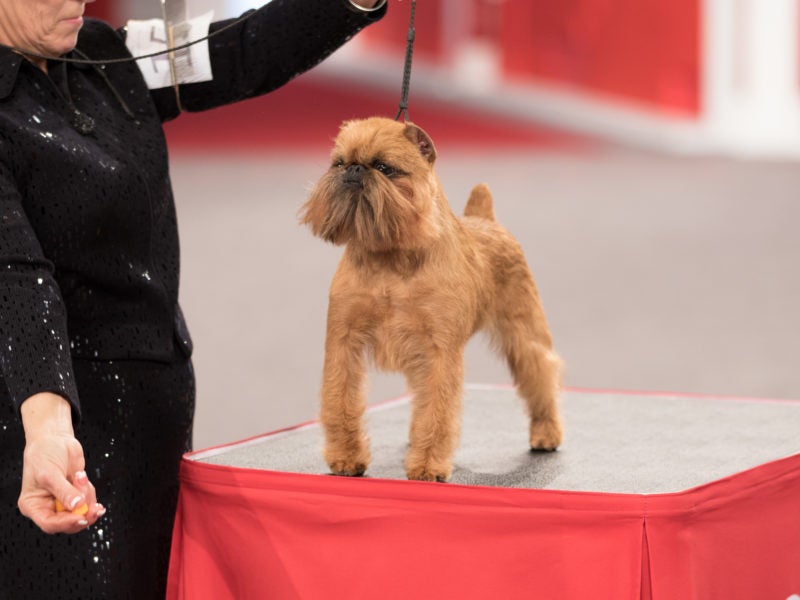
At a recent dog show, a dog of another toy breed entered the ring, and he had a very obvious marking that his breed standard calls an “extremely serious fault.” A very longtime breeder of this breed was showing him.
What was the breeder thinking? Was he making points? Was he hoping the judge didn’t know the standard? Did he think, since the dog was an otherwise very nice specimen, that the judge would put the dog up anyway? Or, heaven forbid, did this breeder think it was OK?
When faults are designated as serious, or constitute a disqualification, there is a reason. Often, it is because that particular feature is a throwback to one of the older foundation breeds that were used to create the breed in question.
Selective Breeding
One example is the disqualifying white spot or blaze on a Brussels Griffon. This trait is difficult to erase once embedded in a breeding program. It hails from the English Toy Spaniel, and possibly from an English terrier, two breeds that were behind the creation of the Brussels Griffon. While the English Toy Spaniel may have contributed mightily to the characteristic dome of the head, breeders must be careful not to allow the white of the Blenheim or Prince Charles to re-enter the gene pool, along with the dome.
This is the very essence of selective breeding. The same is true of the color and ears of the Pug, or the more moderate angles and bite of the Affenpinscher.
Other faults are indicative of genetic or structural deficiencies, such as the butterfly or Dudley nose, or the wry mouth; the former a symptom of lack of pigmentation, and the latter a structural fault. Good breeding stock, which the dog show judge is charged with evaluating, should not have the potential to pass on such egregious faults. Therefore, dogs with these downfalls should not be winning classes.
End of the Line
And then there’s the tail. The Brussels Griffon is not the only breed to require that the tail is docked. The Rottweiler standard also calls for a docked tail. However, in neither standard is the presence of a tail listed as a fault.
The Brussels Griffon judge has three choices when it comes to placing the Griff with a tail:
- Use an otherwise wonderful specimen with an undocked tail – the tail will not impact his ability to produce quality puppies
- Put the dog to the end of the line – he does not meet the standard; or
- Excuse the dog for lack of merit.
The decision rests with the class judge. However, in the Group ring, the playing field changes. Now the judge is looking for the dogs that most closely fit their written standard, and the Brussels Griffon with a tail does not. The bottom line: finish your quality dog with a tail and use him/her to produce winning pups, but don’t expect success as a special.
In the Toy Group ring mentioned above, the very knowledgeable and well-respected judge checked her standard to be sure she was right, and then put the dog at the end of the line.

